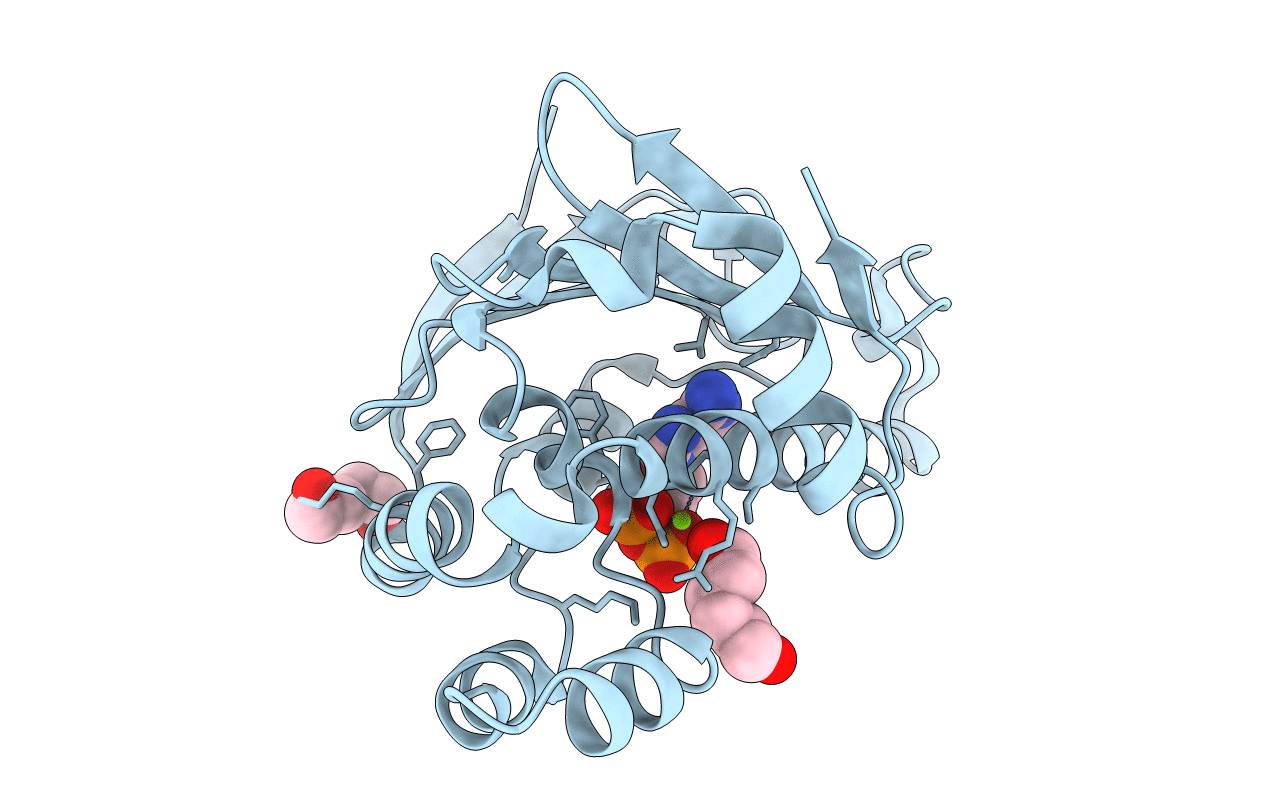
Deposition Date
2006-10-10
Release Date
2006-11-21
Last Version Date
2023-08-30
Entry Detail
PDB ID:
2IOR
Keywords:
Title:
Crystal Structure of the N-terminal Domain of HtpG, the Escherichia coli Hsp90, Bound to ADP
Biological Source:
Source Organism:
Escherichia coli (Taxon ID: 562)
Host Organism:
Method Details:
Experimental Method:
Resolution:
1.65 Å
R-Value Free:
0.19
R-Value Work:
0.16
R-Value Observed:
0.16
Space Group:
P 21 21 21


